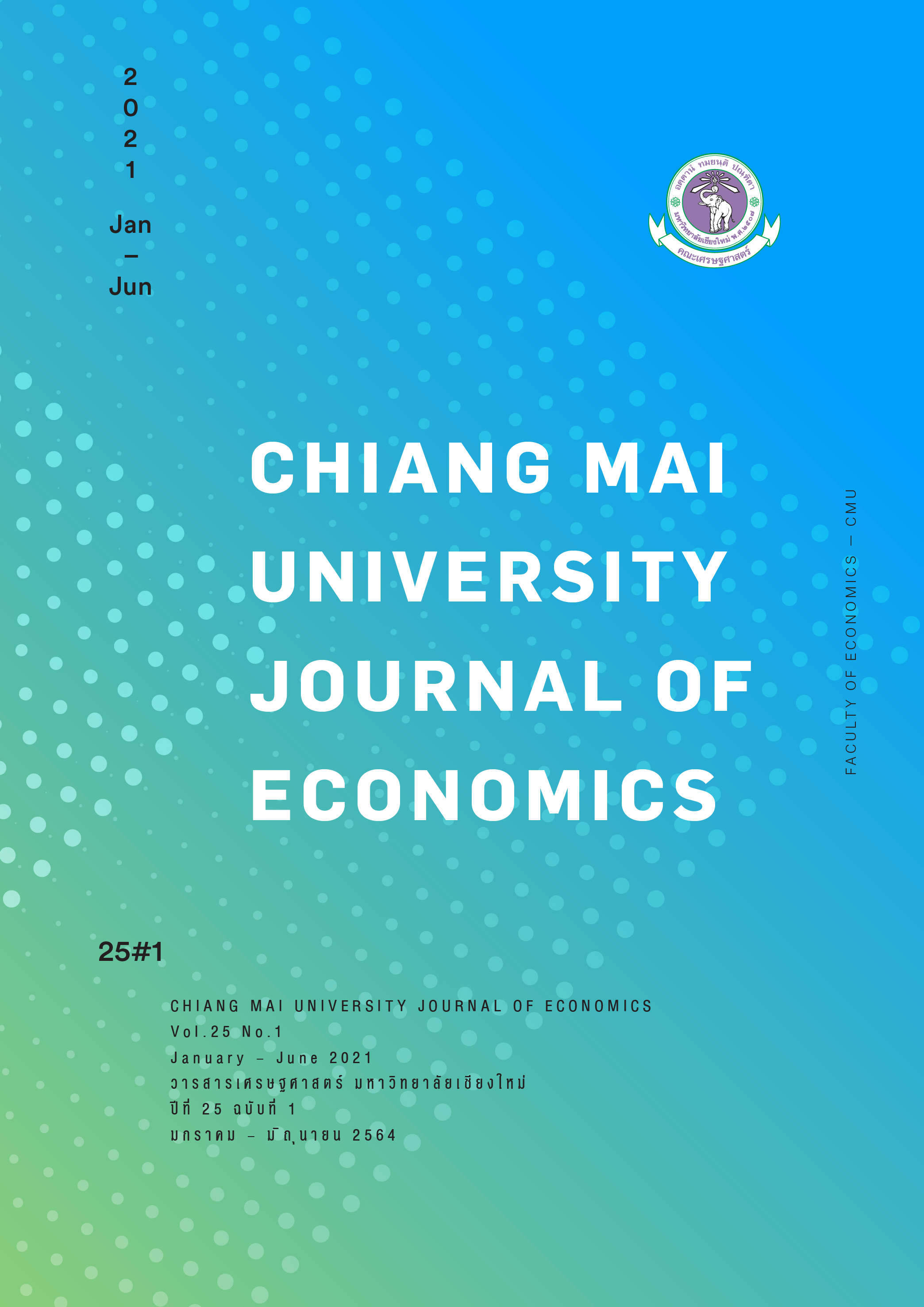The Impact of International Logistics Performance on ASEAN Trade
Keywords:
ASEAN, logistics performance, trade, gravity modelAbstract
The objective of this study is to investigate the impact of international logistics performance on ASEAN trade. The gravity model is applied with an augmented Logistics Performance Index (LPI) and its six logistical components, namely customs, infrastructure, logistics competency, international shipments, tracking and tracing, and timeliness. The obtained results reveal that LPI and its components are positive and highly statistically significant to ASEAN trade, mostly exports. Improvements to logistical components have led to significant growth in trade flows, implying that efficient logistics performance contributes positively to trade. Moreover, in the area of policy regulation, the greatest increase in ASEAN trade has been shown to come primarily from improvement in logistics competency followed by customs and infrastructure. For logistics performance outcomes in terms of time, cost, and reliability, improving timeliness is found to have the greatest influence on boosting trade, followed by tracking and tracing, and international shipment. These findings can help to stimulate the governments and private sectors of ASEAN member states to improve their logistics performance and boost trade.
References
Anderson, J. E., & Van Wincoop, E. (2003). Gravity with gravitas: a solution to the border puzzle. The American Economic Review, 93(1), 170-192.
Arvis, J.-F., Mustra, M. A., Panzer, J., Ojala, L., & Naula, T. (2007). Connecting to compete: trade logistics in the global economy-The Logistics performance index and its indicators. World Bank. Washington, DC.
Arvis, J.-F., Ojala, L., Wiederer, C., Shepherd, B., Raj, A., Dairabayeva, K., & Kiiski, T. (2018). Connecting to compete 2018: trade logistics in the global economy: World Bank.
Arvis, J.-F., Saslavsky, D., Ojala, L., Shepherd, B., Busch, C., & Raj, A. (2014). Connecting to Compete 2014: Trade Logistics in the Global Economy--The Logistics Performance Index and Its Indicators.
Bizoi, A., & Sipos, A. (2014). Logistics Performance and Economic Development–A Comparison within the European Union. Proceeding of MAC-EMM.
De, P., & Saha, A. (2013). Logistics, Trade and Production Networks: An Empirical Investigation. Research and Information System, Discussion Paper(181).
Faria, R. N. D., Souza, C. S. D., & Vieira, J. G. V. (2015). Evaluation of logistic performance indexes of brazil in the international trade. RAM. Revista de Administração Mackenzie, 16(1), 213-235.
Felipe, J., & Kumar, U. (2012). The role of trade facilitation in Central Asia: a gravity model. Eastern european economics, 50(4), 5-20.
Findlay, C. (2009). Trade Facilitation in the ASEAN Economic Community. Policy Brief. Economic Research Institute for ASEAN and East Asia. http://www. eria. org/pdf/ERIA-PB-2009-06. pdf.
Gani, A. (2017). The logistics performance effect in international trade. The Asian Journal of Shipping and Logistics, 33(4), 279-288.
Hausman, W. H., Lee, H. L., & Subramanian, U. (2013). The impact of logistics performance on trade. Production and Operations Management, 22(2), 236-252.
Havenga, J. (2010). Logistics costs in South Africa–The case for macroeconomic measurement. South African Journal of Economics, 78(4), 460-476.
Hollweg, C., & Wong, M.-H. (2009). Measuring regulatory restrictions in logistics services. ERIA Discussion Paper Series(2009-14).
Martí, L., Puertas, R., & García, L. (2014). The importance of the Logistics Performance Index in international trade. Applied Economics, 46(24), 2982-2992.
Otsuki, T. (2011). Quantifying the benefits of trade facilitation in ASEAN. Toward a Competitive ASEAN Single Market: Sectoral Analysis, 2010-2003.
Voraveeravong, P. (2013). Corruption impacts on bilateral trade between ASEAN countries during 2006 to 2011: Gravity model Approach. World Journal of Social Sciences, 3, 27-44.
Wang, M. L., & Choi, C. H. (2018). How logistics performance promote the international trade volume? A comparative analysis of developing and developed countries. International Journal of Logistics Economics and Globalisation, 7(1), 49-70.
Downloads
Published
Issue
Section
License
All opinions and contents in the CMJE are the responsibility of the author(s). Chiang Mai University Journal of Economics reserves the copyright for all published materials. Papers may not be reproduced in any form without the written permission from Chiang Mai University Journal of Economics.
ข้อคิดเห็นที่ปรากฏและแสดงในเนื้อหาบทความต่างๆในวารสารเศรษฐศาสตร์มหาวิทยาลัยเชียงใหม่ ถือเป็นความเห็นและความรับผิดชอบโดยตรงของผู้เขียนบทความนั้นๆ มิใช่เป็นความเห็นและความรับผิดชอบใดๆของวารสารเศรษฐศาสตร์ มหาวิทยาลัยเชียงใหม่
บทความ เนื้อหา และข้อมูล ฯลฯ ในวารสารเศรษฐศาสตร์มหาวิทยาลัยเชียงใหม่ ถือเป็นลิขสิทธิ์เฉพาะของคณะเศรษฐศาสตร์มหาวิทยาลัยเชียงใหม่ หากบุคคลหรือหน่วยงานใดต้องการนำทั้งหมดหรือส่วนหนึ่งส่วนใดไปเผยแพร่ต่อหรือเพื่อกระทำการใดๆ จะต้องได้รับอนุญาตเป็นลายลักษณ์อักษร จากวารสารเศรษฐศาสตร์ มหาวิทยาลัยเชียงใหม่






